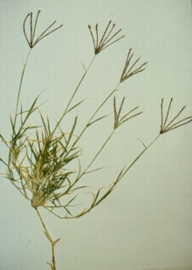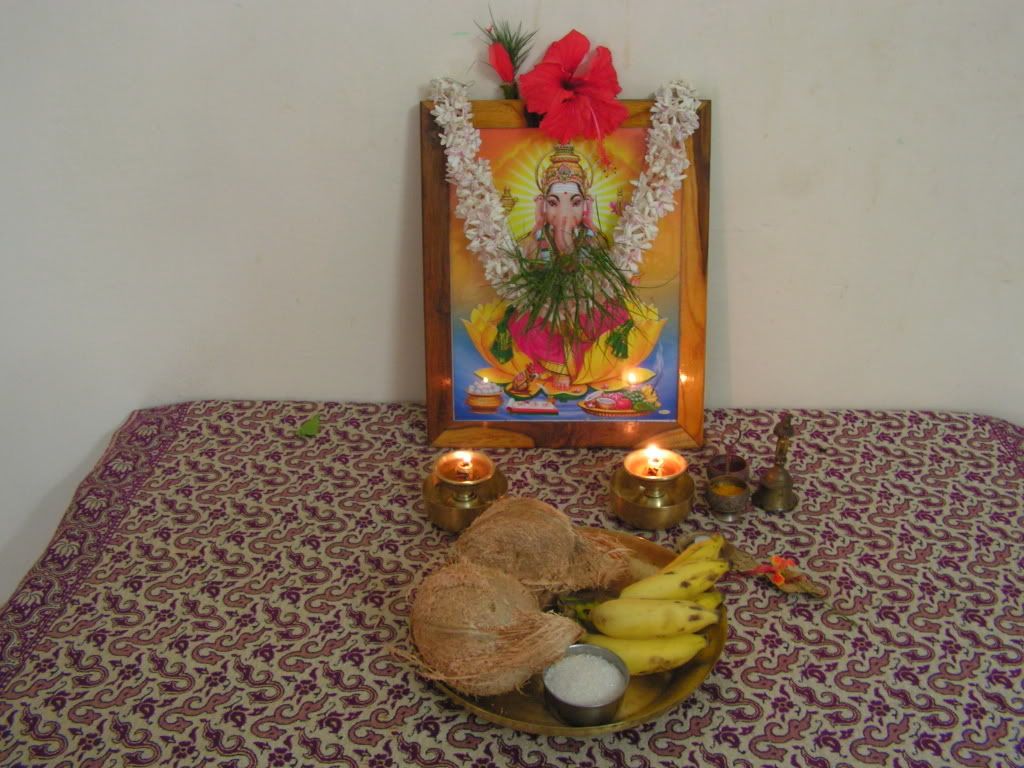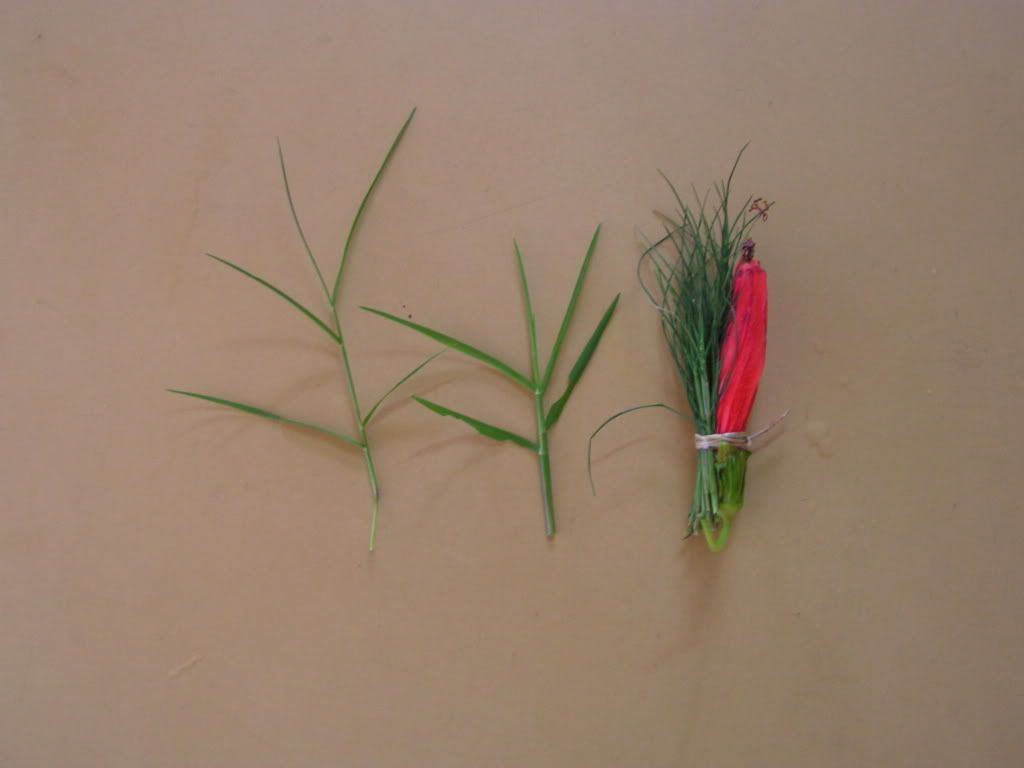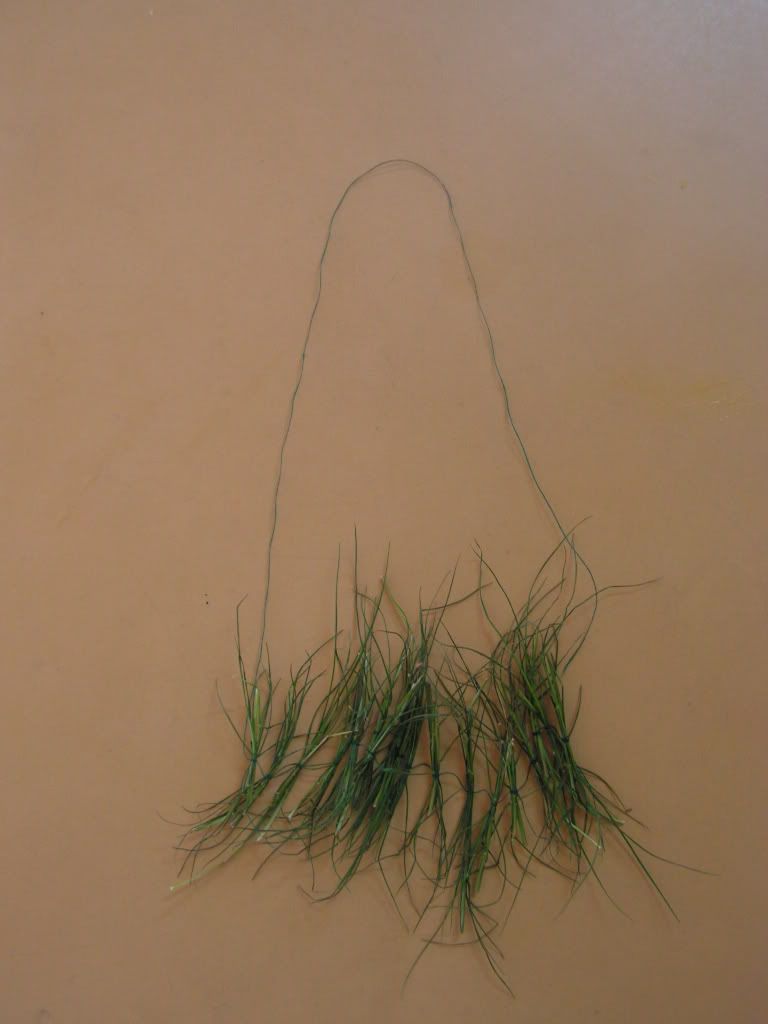Namaste
Aruhu grass
Aruhu grass is associated with Ganesha, and is used often in home shrines. It's common names include:
aruhu, calcutta grass, dog's tooth grass, Indian doab grass, dhoub grass, arugampul, dhub, doob, durva grass, haritali, hariali, bermuda grass
It's scientific name is:
Cynodon dactylon
The blades are a grey-green colour and are with rough edges, the stems are slightly flattened and often tinged purple in colour. The distinctive marker of this grass is the heads of the stem which are the seed heads that produce a cluster of two to six spikes together at the top of the stem:
It is called bermuda grass in the USA because it came from East Afirica to Bermuda Island and then to North America, and can be found in many places. Bermuda grass is a creeping grass, and will creeps along the ground and root where ever a node touches the ground, forming a dense mat. It also reproduces from roots under the ground. Bermuda grass can grow in poor soil. During droughts the upper parts die off, but the grass will keep growing from its rhizomes. It prefers moist and warm climates. It is often used on golf courses.
The red hibiscus is a favorite flower of the Lord Ganesha, but also you can offer aruhu or durva or bermuda grass.
You can tie a bunch of 21 aruhu stems together with red thread and with a hybiscus flower tied with it as shown:
Here is a photo of a garland:
This tradition of 21 stems goes back to when thousands of sages came with bunches of 21 aruhu or durvas and placed them on the head of "Bal Ganesh" to provide cooling to the fever hot head of Bal Ganesh which started after He swallowed a demon called Analasura.
Ganesha will give punya (merit) to anyone who offers this grass. The tip of the grass stem is used, especially those with 3 or 5 blades.
Please add any of your aruhu or durva grass traditions and comments to share!
Jai Ganesha!
Om Namah Sivaya










 Reply With Quote
Reply With Quote
Bookmarks